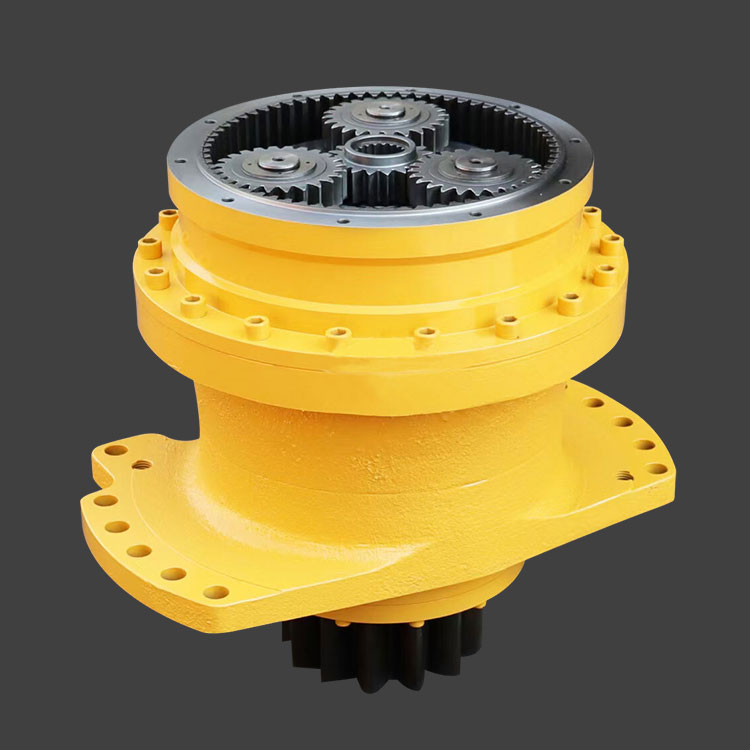Unveiling the Culprits: Potential Causes of Failure in Swing Reduction Gearboxes and Prevention Strategies
2024-03-22
In the realm of heavy machinery, swing reduction gearboxes are the workhorses responsible for facilitating precise rotation and maneuverability. However, like any mechanical component, they are susceptible to failure or malfunction if not properly maintained or operated. Understanding the potential causes of failure is essential for preventing costly downtime and ensuring the longevity of swing reduction gearboxes. In this blog, we'll explore common causes of failure in swing reduction gearboxes and strategies to prevent them.
1. Insufficient Lubrication:
One of the primary causes of failure in swing reduction gearboxes is insufficient lubrication. Without adequate lubrication, gears, bearings, and shafts experience increased friction, leading to wear, overheating, and premature failure. Regular lubrication according to manufacturer specifications is essential for preventing friction-related failures and ensuring smooth gearbox operation.
Prevention Strategy: Establish a rigorous lubrication schedule and use high-quality lubricants suitable for the operating conditions of the gearbox. Conduct regular inspections to ensure proper lubricant levels and address any leaks or contamination promptly.
2. Contamination:
Contamination of the gearbox with dirt, debris, water, or other foreign particles can accelerate wear and damage internal components. Contaminants can enter the gearbox through seals, vents, or openings, leading to abrasive wear, corrosion, and reduced lubricant effectiveness.
Prevention Strategy: Implement proactive measures to minimize contamination, such as sealing openings and vents, maintaining proper seals, and implementing effective filtration systems. Conduct regular inspections and cleanings to remove any accumulated debris or contaminants from the gearbox.
3. Overloading:
Exceeding the rated capacity or operating limits of a swing reduction gearbox can lead to overload conditions, causing excessive stress and strain on gearbox components. Overloading can result in accelerated wear, gear tooth failure, and bearing damage, ultimately leading to gearbox failure.
Prevention Strategy: Adhere to the manufacturer's recommended operating limits and avoid overloading the gearbox beyond its capacity. Implement load monitoring systems to detect and prevent overloads in real time. Conduct regular inspections to identify signs of overloading, such as abnormal wear patterns or increased noise.
4. Misalignment:
Misalignment of gearbox components, such as input and output shafts, can result in uneven loading, increased friction, and premature wear. Misalignment may occur due to improper installation, inadequate maintenance, or external forces acting on the gearbox.
Prevention Strategy: Ensure proper alignment of gearbox components during installation and maintenance procedures. Utilize precision alignment tools and techniques to achieve optimal alignment and minimize wear. Regularly monitor gearbox alignment and address any misalignment issues promptly.
5. Overheating:
Excessive heat buildup within the gearbox can degrade lubricants, accelerate wear, and damage internal components. Overheating may result from factors such as inadequate lubrication, overloading, friction, or ambient temperature extremes.
Prevention Strategy: Monitor gearbox temperature regularly using temperature sensors or infrared thermometers. Ensure proper lubrication and cooling systems are in place and functioning effectively. Address any sources of heat generation, such as friction or overloading, to prevent overheating.
Conclusion:
In conclusion, understanding the potential causes of failure in swing reduction gearboxes is essential for implementing proactive prevention strategies and ensuring reliable operation. By addressing issues such as insufficient lubrication, contamination, overloading, misalignment, and overheating, operators and maintenance personnel can minimize the risk of gearbox failure and maximize equipment uptime and productivity. Through regular maintenance, proper lubrication, and adherence to operating limits, swing reduction gearboxes can fulfill their critical role in heavy machinery applications with efficiency and reliability.



